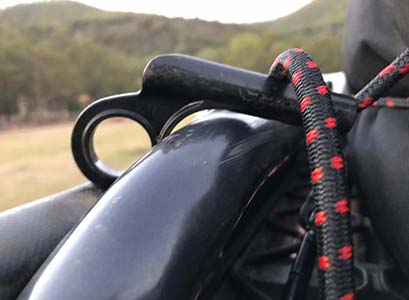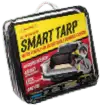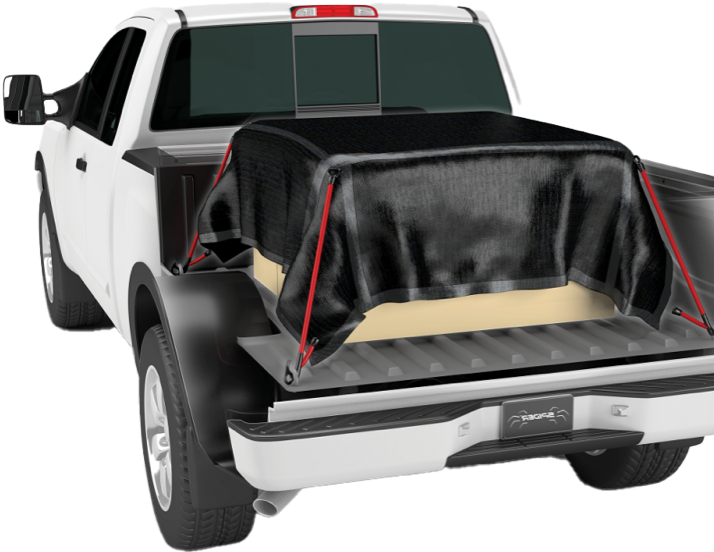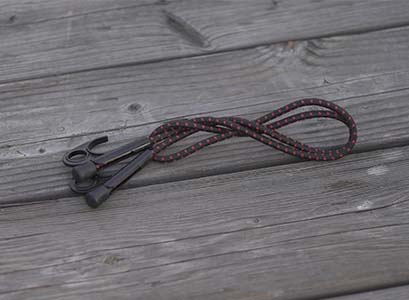
Why the Materials of Bungee Cords Matter
Bungee cords, also known as shock cords or occy straps, are versatile tools known for their elasticity, strength, and ease of use. Bungee cords can be used in a wide variety of applications, making them a must-have in workshops and garages across the country:
- Securing equipment and vehicle load covers
- Home organisation and storage
- Outdoor activities
And because of their wide variety of uses, the materials used in bungee cords need to be durable, adaptable, and safe.
Why are Bungee Cords Made from Certain Materials?
The materials used in the construction of bungee cords play an important role in how bungee cords work. And understanding these materials will help you choose the right bungee cord for your use.
The choice of materials in bungee cords is not just about immediate functionality. It also covers durability, environmental sustainability, and most importantly, the safety of the user.
Performance and Durability
Elasticity and Stretchability
The core of the bungee cord is often made with rubber or a synthetic rubber-like material. These materials define its ability to withstand stretching. Higher-quality materials ensure the cord can extend sufficiently without breaking or losing its elasticity over time.
Tensile Strength
The tensile strength of a bungee cord determines how much weight it can bear. The tensile strength of the bungee cord is influenced by the materials used in both the core and the outer sheath.
Weather Resistance
Exposure to the elements such as UV rays, rain, and temperatures can degrade the strength and durability of bungee cords. Materials like Ethylene Propylene Diene Monomer (EPDM) offer protection to weathering, making them suited to harsh conditions.
Abrasion Resistance
The durability of a bungee cord is also tested against abrasion. Particularly when being used to secure loads, sheathing materials like nylon provide a strong protective layer, reducing wear and tear over time.
Safety Considerations
Load Capacity
Choosing a bungee cord with appropriate materials for its intended load is vital. Overstretching or overloading can lead to snapping, which can cause injury or damage.
Environmental Compatibility
Certain materials may degrade quickly in specific environments. For instance, natural rubber may not perform well in oily or greasy environments, leading to potential safety hazards.
Quality and Longevity
High-quality materials ensure that the bungee cord retains its properties over time. Inferior materials might lose elasticity or strength, leading to unexpected failures.
Chemical Resistance
Exposure to chemicals can compromise the integrity of bungee cords. Selecting materials resistant to chemicals common in the cord’s usage environment is crucial for safety.
Common Materials in Bungee Cords
Each of the materials used in bungee cords brings distinct properties, contributing to their functionality, durability, and application suitability. The choice of material combination depends on the specific requirements of the usage scenario, balancing factors like elasticity, strength, and environmental resistance.
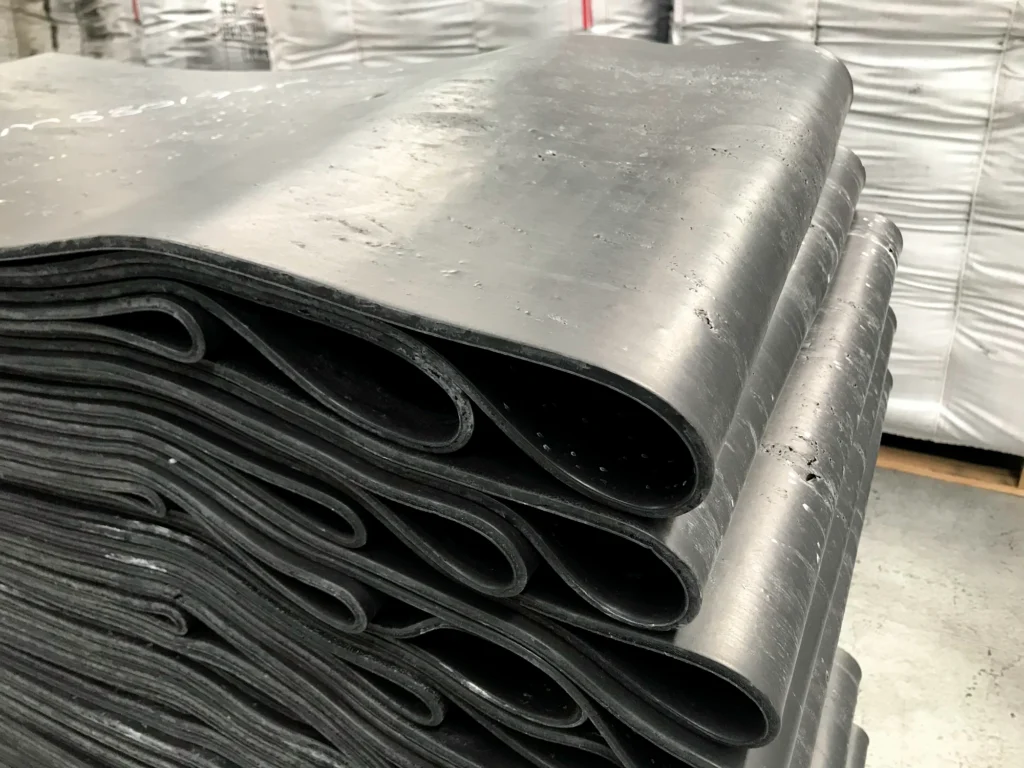
Natural Rubber
Natural rubber is a highly elastic substance obtained from the latex of rubber trees. It possesses excellent stretchability and resilience, making it an ideal core material for bungee cords. Natural rubber is sensitive to temperature changes, UV light, and certain chemicals.
Why is natural rubber used as a material for bungee cords?
- Superior elasticity and tensile strength ensure excellent stretch and recovery, essential for the rebound effect in bungee cords.
- Natural rubber provides a smooth, consistent stretch, ideal for general-purpose bungee applications.
- It’s also biodegradable, making it an environmentally friendly option.
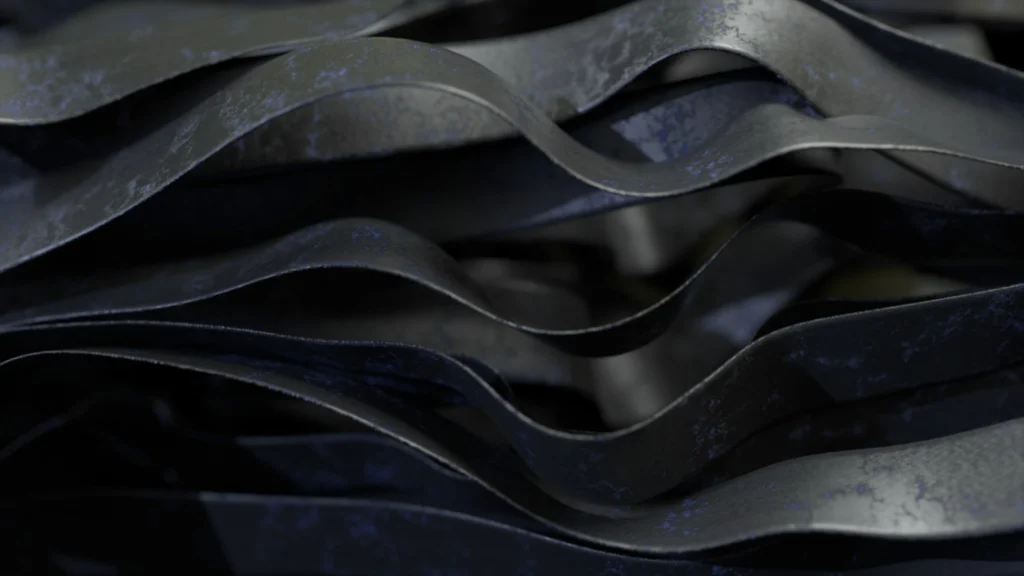
Synthetic Rubber (e.g., Neoprene, EPDM)
Neoprene is a synthetic rubber known for its chemical stability and resistance to weather elements. EPDM (Ethylene Propylene Diene Monomer) is another synthetic rubber, notable for its excellent heat, ozone, and weather resistance. These materials tend to be ess sensitive to environmental factors than natural rubber.
Why Are Synthetic Rubbers Used as Common Bungee Cord Materials?
- Greater durability and longevity, especially in harsh weather conditions.
- Better resistance to UV radiation, ozone, and extreme temperatures, preventing premature degradation.
- Suitable for industrial and marine applications where exposure to harsh conditions is common.
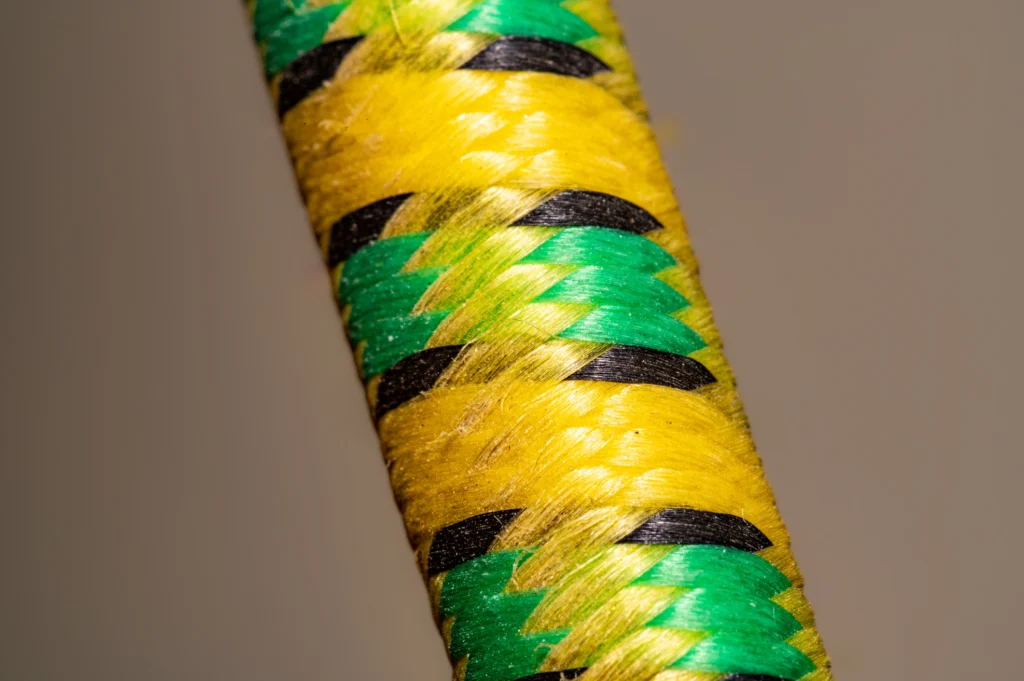
Outer Sheath Materials (e.g., Nylon, Polyester)
Nylon is a synthetic polymer known for its exceptional strength, abrasion resistance, and flexibility. Polyester is another synthetic fibre, valued for its durability, resistance to stretching and shrinking, and its quick-drying properties.
Why Are Nylon and Polyester Used as Materials for Bungee Cords?
- Both materials offer added protection to the elastic core, ensuring consistent performance under various conditions.
- Nylon sheaths provide excellent resistance to abrasion and wear, prolonging the lifespan of the bungee cord.
- Polyester’s resistance to moisture and mildew makes it suitable for outdoor and marine environments.
Choosing Bungee Cords Based on Materials
Being familiar with and understanding bungee cords and the materials that are used to make them will help you to know both the abilities and limitations of their applications.
The right material combination may be able to withstand specific environmental conditions, bear the intended load, and endure the wear and tear that comes with regular usage without compromising safety.
Knowing this will help you to make better decisions in choosing bungee cords when you need them. Whether you’re securing load to a vehicle or trailer, setting up camping gear, or using them for storage around the house, the right bungee cords should be safe to use and durable.
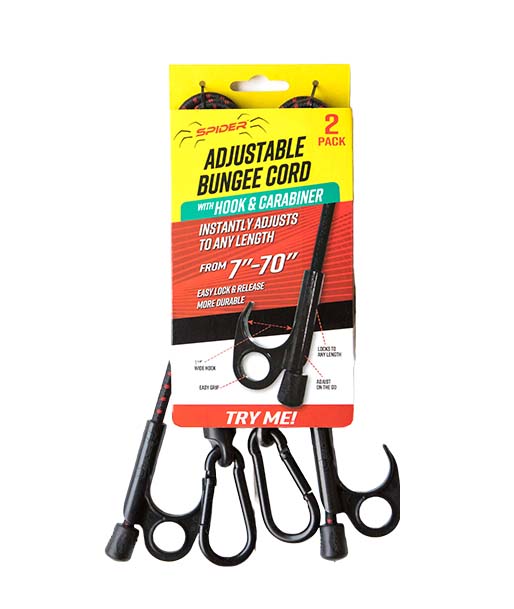
Spider Cords: Bungee Cords Designed with Materials in Mind
Spider Cords have been specially designed to be safe, durable, and easy to use in a wide range of applications. The materials used in their construction ensure they’re strong, durable and able to withstand wear and tear.
Spider Cords are made using a premium latex rubber core and a UV-stabilised nylon braid which makes them up to 10 times more abrasion-resistant than other bungee cords available. The cords also feature the patented Spider-Lock™ hooks made of non-scratch nylon-fibre composite, providing exceptional strength and ease of use.
These features contribute to the Spider Cords’ functionality, strength, and versatility, making them a reliable choice for a broad range of applications.
Learn more about these bungee cords or shop online to find a size or design that will suit you.


